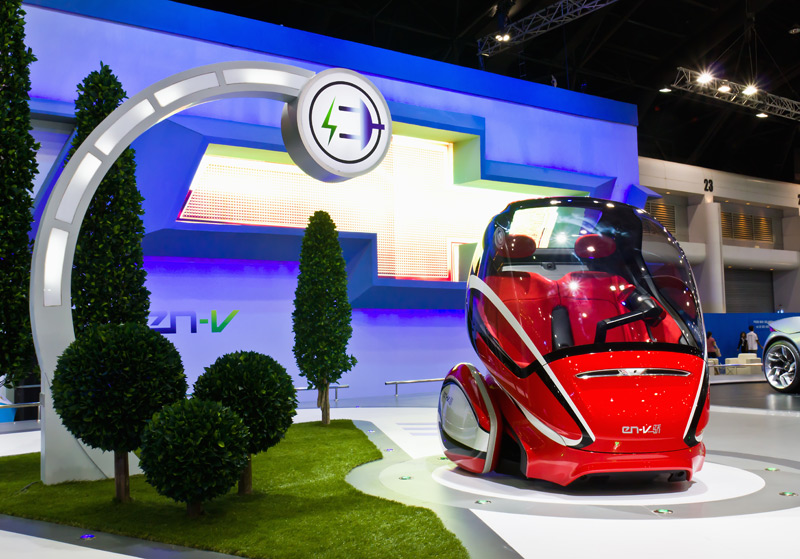We have been hearing about electric vehicles for years now, which did not earn as much popularity as was expected. Hybrids have done much better in the auto market of the general population, and now car manufacturers are expanding even further to begin conceptualizing flying cars, hover crafts and more technology sophisticated and communicative electric vehicles. One such vehicle is the Electric Networked Vehicle.
In 2012, General Motors debuted another rendering of the second-generation EN-V at the Beijing Auto Show, announcing at the same time that China will be its first testing grounds for these electric pods. This EN-V, is a two-seater electric vehicle that will be capable of communicating with other vehicles and can be driven autonomously or manually. GM specifically designed this concept for highly congested megacities and metropolis areas of the future, and hopes it will help ease parking, traffic, and pollution in dense urban environments. For that reason, it makes sense that Beijing or another city in China will host the pilot program as opposed to Detroit, as one GM executive previously suggested.
With the exception of an embedded solar panel on the roof, the new drawing doesn’t reveal anything new about the next-generation pod. GM announced that the EN-V 2.0 concept adds in-vehicle climate control, personal storage space, and will be capable of driving in all weather and city road conditions.
It’s not clear if and when GM’s China-based test program will begin. The automotive manufacturer began construction on the new EN-V last October, and said its GPS systems must become more accurate before it can be tested in a real world environment. Although there are obviously some quirks that need to be worked out with regards to this particular concept, the idea is of course a good one, especially with its emphasis on the communication networking aspect of its technology. It will be interesting to keep up with this project as the official tests take place in the near future.



